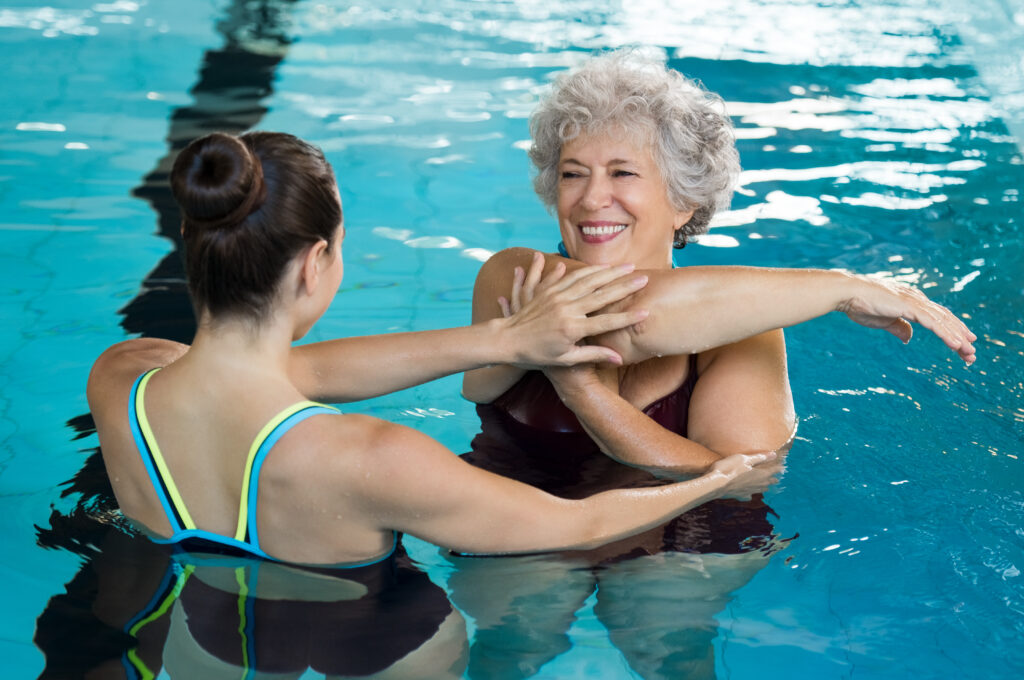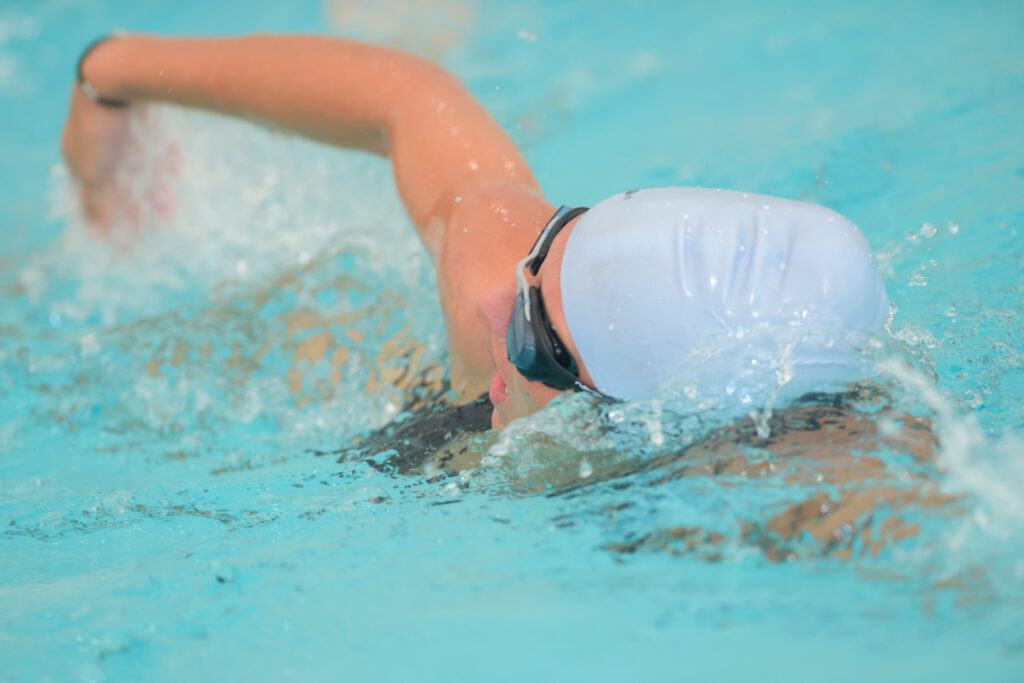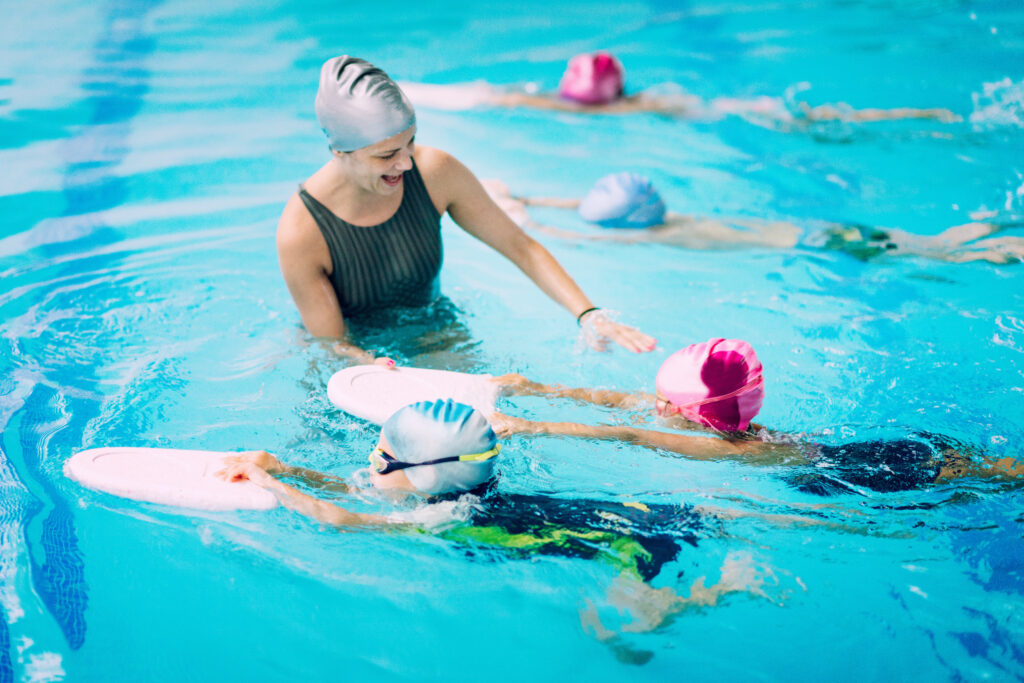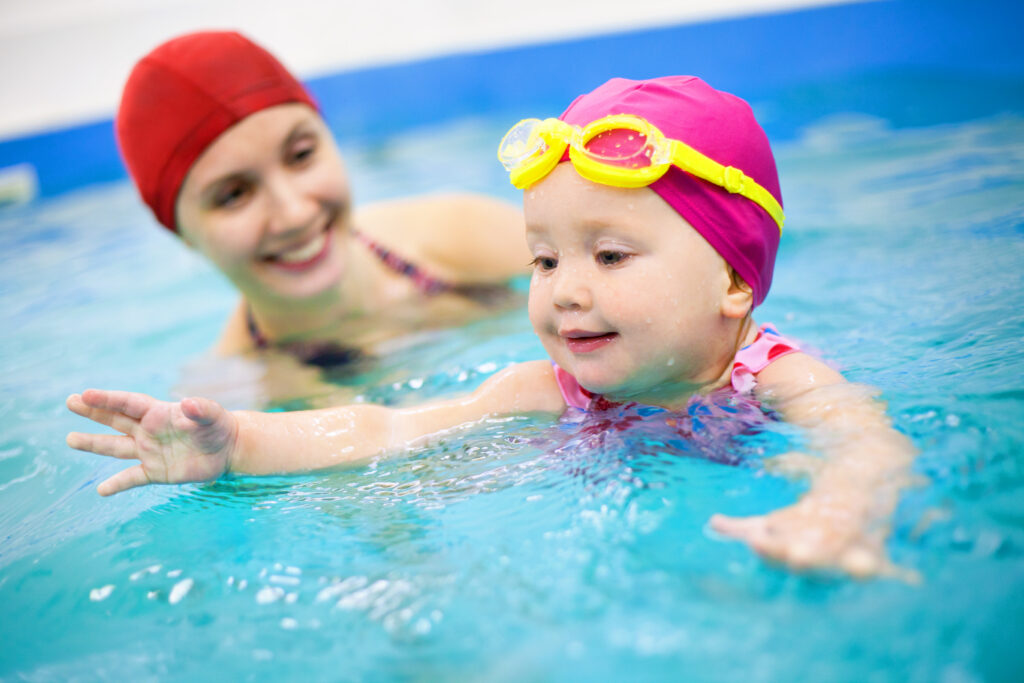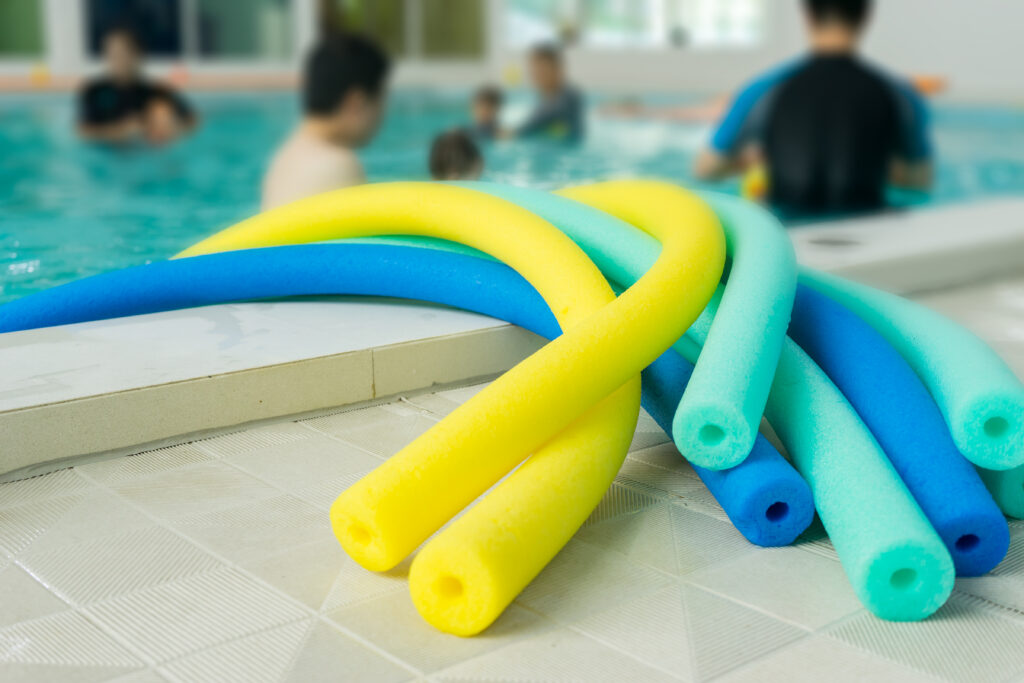Swimming is a fantastic form of exercise at any age, but especially as we get older. It’s a low impact activity that’s easy on the joints, making it a great option for those with arthritis or other mobility issues. Swimming can also help improve balance and coordination, which can be especially important for older adults who are at a higher risk of falls.
In addition to the physical benefits, swimming can also have a positive impact on mental health. Being in the water can be calming and meditative, and the repetitive motions of swimming can be soothing and therapeutic. Swimming is also a social activity, which can help combat feelings of isolation and loneliness that are common in older adults.
Key Takeaways
- Swimming is a low impact exercise that’s easy on the joints, making it a great option for older adults with arthritis or mobility issues.
- Swimming can improve balance and coordination, which can be especially important for older adults who are at a higher risk of falls.
- Swimming can have a positive impact on mental health, providing a calming and meditative experience while also offering social benefits.
The Importance of Exercise in Old Age
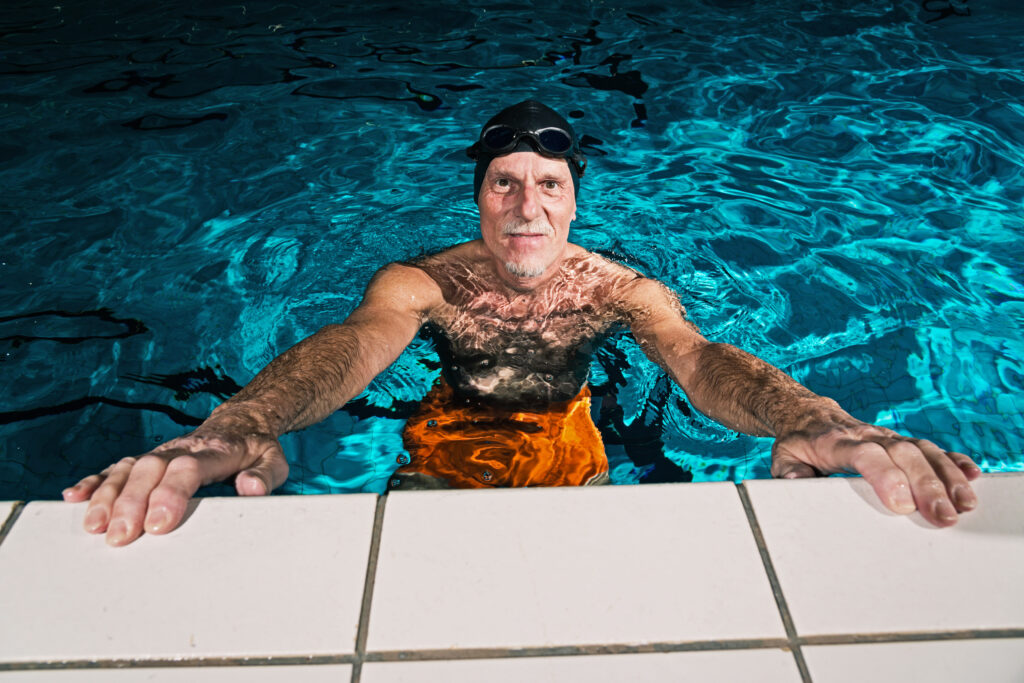
As we age, it is important to maintain an active lifestyle to help us stay healthy and independent for longer. Exercise is key to achieving this goal and offers a range of benefits, both physical and mental.
Regular exercise can help us to maintain a healthy weight, reduce the risk of developing chronic diseases such as heart disease, stroke, and diabetes, and improve our overall fitness levels. It can also help to improve our balance and coordination, which can reduce the risk of falls and injuries.
In addition to these physical benefits, exercise is also important for our mental health and wellbeing. It can help to reduce stress and anxiety, improve our mood and self-esteem, and even help to prevent cognitive decline and dementia.
As we get older, it is important to choose exercises that are suitable for our age and fitness level. Swimming is an excellent option for older adults as it is a low-impact exercise that is easy on the joints and muscles. It can also be a social activity, which can help to reduce feelings of isolation and loneliness.
Overall, exercise is crucial for maintaining our health and independence as we age. By incorporating regular physical activity into our daily routine, we can improve our physical and mental wellbeing and enjoy a better quality of life in our later years.
Swimming as a Low Impact Exercise
Swimming is an excellent form of exercise for seniors because it is low-impact, meaning it places minimal stress on the joints. This makes it an ideal exercise for those with joint pain or arthritis. In this section, we will explore the benefits of swimming as a low-impact exercise for seniors.
Reduced Strain on Joints
Swimming is a low-impact exercise that can help seniors effectively manage their weight while minimising the risk of injury. Unlike high-impact exercises like running or jumping, swimming puts less stress on the joints, making it an excellent exercise for seniors with joint pain or arthritis. Swimming can also help improve joint flexibility and range of motion, making it easier for seniors to perform daily activities.
Improved Cardiovascular Health
Swimming is an excellent cardiovascular exercise, working to strengthen your heart, improve circulation, lower your blood pressure and reduce the risk of heart attack. Having a healthier heart will also reduce the effort it takes to perform daily activities such as climbing stairs and walking around. This is especially important as we age, and our bodies become less efficient at pumping blood around the body.
In summary, swimming is an excellent low-impact exercise for seniors. It can help reduce joint pain, improve joint flexibility, and range of motion. Swimming can also improve cardiovascular health, making it easier to perform daily activities.
Mental Benefits of Swimming
Swimming is not only beneficial for physical health but also for mental well-being. In this section, we will discuss the various mental benefits of swimming, including stress reduction, boosted mood, and overall mental well-being.
Stress Reduction
Swimming is an excellent way to reduce stress and alleviate anxiety. The rhythmic movement of swimming can help calm the mind and reduce tension in the body. Additionally, the sound of water can be soothing and relaxing, making it an ideal environment for stress reduction.
Boosted Mood
Swimming is also known to boost mood and increase feelings of happiness. When we swim, our body releases endorphins, which are known as the “feel-good” hormones. These hormones can help to reduce feelings of depression and anxiety and increase overall feelings of well-being.
Mental Well-being
Swimming can also have a positive impact on overall mental well-being. Regular swimming has been shown to improve cognitive function and memory, as well as reduce the risk of dementia and cognitive decline. Additionally, swimming can help to increase self-esteem and confidence, particularly in older adults who may be experiencing age-related changes in their physical abilities.
In conclusion, swimming is an excellent form of exercise for improving both physical and mental health, particularly as we age. The stress-reducing, mood-boosting, and overall mental well-being benefits of swimming make it a valuable addition to any exercise routine.
Physical Benefits of Swimming

Swimming is a great form of exercise for older adults as it has numerous physical benefits. Here are some of the ways swimming can improve your physical health:
Improved Flexibility
Swimming involves a wide range of motion, which can help to improve your flexibility. The resistance of the water also provides a gentle way to stretch and lengthen your muscles. This can be particularly beneficial for older adults who may experience joint stiffness or reduced mobility.
Increased Muscle Strength
Swimming is a great way to build muscle strength, particularly in your upper body. The resistance of the water provides a natural form of resistance training, which can help to tone your muscles and improve your overall strength. Swimming can also help to improve your core strength, which is important for maintaining good posture and balance.
Enhanced Stamina
Swimming is an excellent way to improve your cardiovascular fitness and endurance. Regular swimming sessions can help to increase your lung capacity and improve your overall fitness levels. This can be particularly beneficial for older adults who may be at risk of heart disease or other cardiovascular conditions.
Overall, swimming is a low-impact form of exercise that can provide numerous physical benefits for older adults. Whether you’re looking to improve your flexibility, build muscle strength, or enhance your stamina, swimming is a great way to stay active and healthy.
Swimming for Better Balance and Coordination
As we age, our balance and coordination can decline, increasing the risk of falls and injuries. Fortunately, swimming is an excellent form of exercise that can help improve both balance and coordination.
Swimming requires the use of multiple muscle groups simultaneously, including those in the arms, legs, and core. This helps to improve overall body strength and stability, which can translate to better balance and coordination on land.
In addition, the resistance of the water provides a unique challenge for the body, requiring us to work harder to maintain proper form and control our movements. This can help to improve our proprioception, or our body’s awareness of its position in space, which is essential for maintaining balance and coordination.
One study published in the Journal of Aging and Physical Activity found that older adults who participated in a 12-week swimming program showed significant improvements in both balance and gait compared to a control group.
Another benefit of swimming for balance and coordination is that it is a low-impact exercise. This means that it is easier on the joints than many other forms of exercise, reducing the risk of injury and making it a great option for those with arthritis or other joint conditions.
Overall, swimming is an excellent choice for older adults looking to improve their balance and coordination. Its low-impact nature, combined with its ability to work multiple muscle groups simultaneously and challenge the body’s proprioception, make it an effective and enjoyable way to stay active and healthy.
Incorporating Swimming into Your Exercise Routine
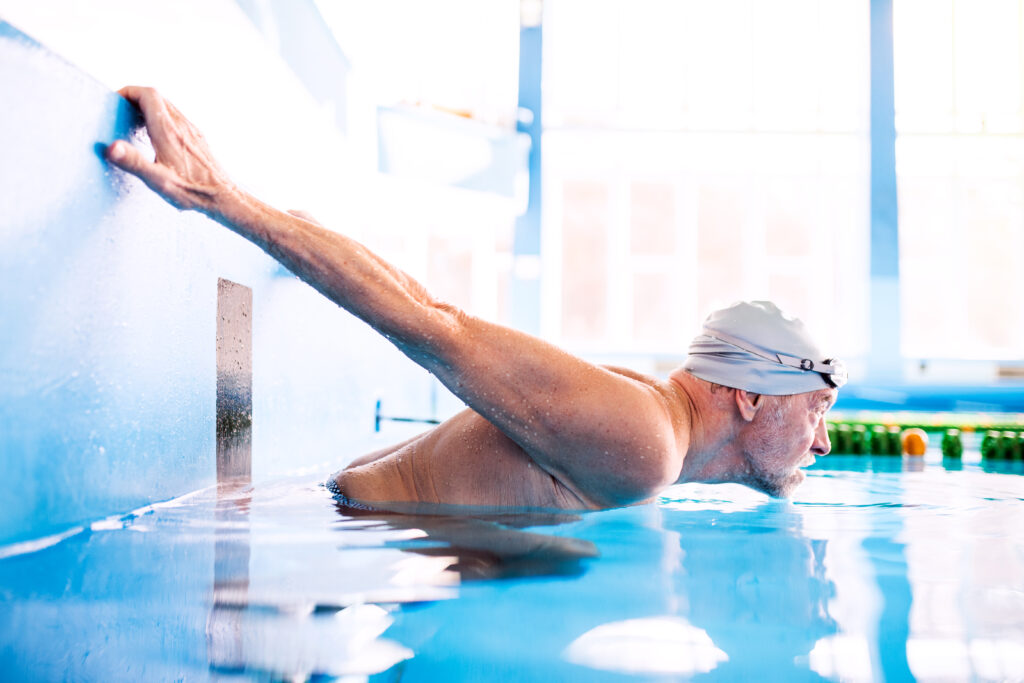
Swimming is an excellent form of exercise for older adults. It is a low-impact activity that is gentle on the joints, making it suitable for those with arthritis or other joint issues. Additionally, swimming is a full-body workout that can help improve cardiovascular health, endurance, flexibility, and muscle strength.
Here are some tips for incorporating swimming into your exercise routine:
- Start slowly and gradually increase the intensity and duration of your swimming sessions. If you are new to swimming, start with short sessions of 10-15 minutes and build up to longer sessions of 30-45 minutes.
- Choose a swimming stroke that is comfortable for you. If you are not comfortable with the traditional freestyle stroke, try the breaststroke or backstroke instead.
- Use swimming aids such as kickboards or pull buoys to help you maintain proper form and build strength.
- Join a swim class or find a swim partner to help keep you motivated and accountable.
- Incorporate other forms of exercise into your routine, such as walking or yoga, to help improve overall fitness and prevent boredom.
Overall, swimming is an excellent form of exercise for older adults. It is a low-impact activity that can help improve cardiovascular health, endurance, flexibility, and muscle strength. By following these tips, you can safely and effectively incorporate swimming into your exercise routine and reap the many benefits it has to offer.
Safety Precautions for Older Swimmers
As we age, it’s important to take extra precautions when swimming to ensure our safety. Here are some tips to keep in mind before diving in:
Check with your doctor
Before starting any new exercise routine, it’s important to check with your doctor to make sure it’s safe for you to do so. This is especially important if you have any pre-existing medical conditions, such as heart disease or arthritis.
Warm-up and cool down
Just like with any exercise, it’s important to warm-up before swimming and cool down afterwards. This can help prevent injury and reduce muscle soreness. Consider doing some light stretching before and after your swim.
Wear appropriate swimwear
Wearing appropriate swimwear can help prevent accidents and injuries while swimming. Make sure your swimwear fits properly and is comfortable to wear. If you wear glasses, consider wearing prescription goggles to help you see clearly while swimming.
Use pool equipment safely
If you use pool equipment, such as kickboards or pull buoys, make sure you use them safely and correctly. Improper use of pool equipment can lead to injury or accidents.
Be aware of your surroundings
Always be aware of your surroundings while swimming. Avoid swimming alone, and make sure there is a lifeguard on duty if you are swimming in a public pool. If you are swimming in open water, such as a lake or ocean, be aware of any potential hazards, such as strong currents or underwater obstacles.
Stay hydrated
Swimming can be dehydrating, so it’s important to drink plenty of water before, during, and after your swim. This can help prevent cramps and other health issues.
By following these safety precautions, we can enjoy the many benefits of swimming while reducing our risk of injury or accidents.
Conclusion
In conclusion, swimming is an excellent form of exercise for older adults. It offers a range of physical and mental health benefits that can help improve overall wellbeing.
Firstly, swimming is a low-impact exercise that is easy on the joints and can reduce the pain that comes with arthritis. It can also help build core muscles and balance, lowering the risk of falls.
Secondly, swimming is great for cardiovascular health and can lower the risk of heart disease and stroke. It is also an effective way to manage weight and improve lung function.
Thirdly, swimming has numerous mental health benefits. It can reduce stress and anxiety, improve mood, and boost self-esteem.
It is important to note that while swimming is a great form of exercise, it is not the only one. It is important to incorporate a variety of exercises into your routine to ensure overall fitness.
In summary, swimming is a fantastic way to stay active and healthy as you age. It is a versatile exercise that can be tailored to your fitness level and preferences. So, grab your swimsuit and dive in!
Frequently Asked Questions
What are the health benefits of swimming as you age?
Swimming is an excellent low-impact exercise that can help seniors maintain their overall health and fitness levels. It can improve cardiovascular health, increase muscle strength and flexibility, and reduce the risk of chronic conditions such as diabetes, high blood pressure, and heart disease.
What are some swimming workouts suitable for seniors?
Seniors can benefit from a variety of swimming workouts, including laps, water aerobics, and water walking. These exercises can help improve muscle strength, flexibility, and cardiovascular health. It is important to consult a doctor or a qualified swimming instructor before starting a new exercise routine.
Is swimming a low-impact exercise for older people?
Yes, swimming is a low-impact exercise that can be gentle on the joints and muscles. The buoyancy of water can reduce the impact of exercise on the body, making it an ideal form of exercise for seniors who may have arthritis or other joint problems.
Can swimming improve fitness levels for seniors?
Yes, swimming can improve fitness levels for seniors by increasing cardiovascular endurance, muscle strength, and flexibility. Swimming can also help seniors maintain a healthy weight and reduce the risk of chronic conditions such as diabetes, high blood pressure, and heart disease.
At what age can you start swimming for exercise?
Swimming is a suitable form of exercise for people of all ages, including seniors. However, it is important to consult a doctor or a qualified swimming instructor before starting a new exercise routine, especially if you have any existing health conditions.
Are there any indoor swimming facilities for seniors nearby?
There are many indoor swimming facilities that offer classes and programs specifically designed for seniors. Local community centres, gyms, and YMCAs often have indoor pools that are accessible to seniors. It is important to research facilities in your area and find one that meets your needs and preferences.

